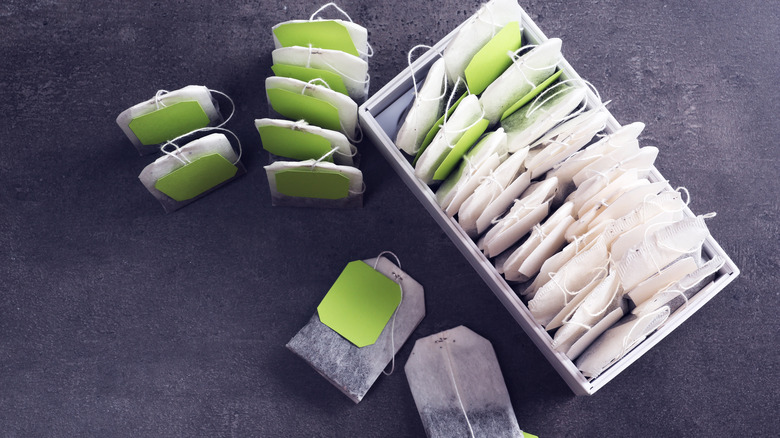The Accidental Origin Of Tea Bags
People have been drinking tea for almost 5,000 years. According to Coffee Tea Warehouse, the drink was first discovered by Emperor Shen Nung in China back in 2732 B.C., and it has since become one of the most popular beverages in the world. Of course, for many of us today, the perfect vehicle for delivering the tea is the tea bag, which infuses the hot liquid with tea without leaving behind leaves or allowing the flavor to steep too long. However, the now-ubiquitous tea bag did not come into being until much later, having been invented thousands of years after tea leaves were first used to flavor hot water.
For much of human history, tea was made by brewing loose tea leaves in a pot of boiling water and then straining out the dregs, per the UK Tea and Infusions Association. Eventually, small metal containers with attached chains were devised to hold tea leaves and easily remove them once the tea had steeped. These were popular until the early 20th century, when the handy little tea bag was discovered completely by accident.
Tea bags were originally used to distribute tea samples to customers
According to the UK Tea and Infusions Association, the very first tea bags were invented by a New York-based tea merchant named Thomas Sullivan around 1908. While trying to make samples for his customers, Sullivan decided to parcel out small amounts of his tea into little silk sachets to pass out for people to try. However, customers began using the bags the same way they used the reusable metal containers, and many soon found they preferred this convenient method of brewing tea.
With just a few more tweaks, including changing the material from silk to the more durable gauze, the modern tea bag was invented. They were even sold in two different sizes: a bigger bag meant to be steeped in a whole teapot, and a smaller one for personal use. By the 1920s, the bags began to be sold commercially. The material was changed to paper and a small string was added for easy removal from the cup, but relatively few changes have been made to the useful, innovative, and entirely accidental invention ever since.

